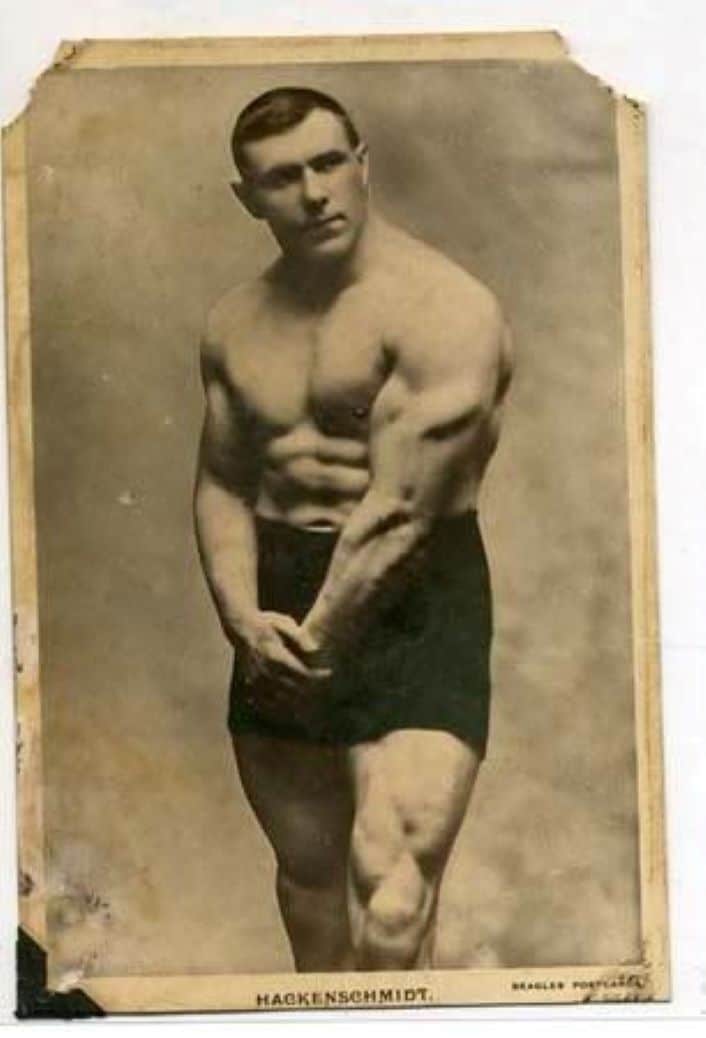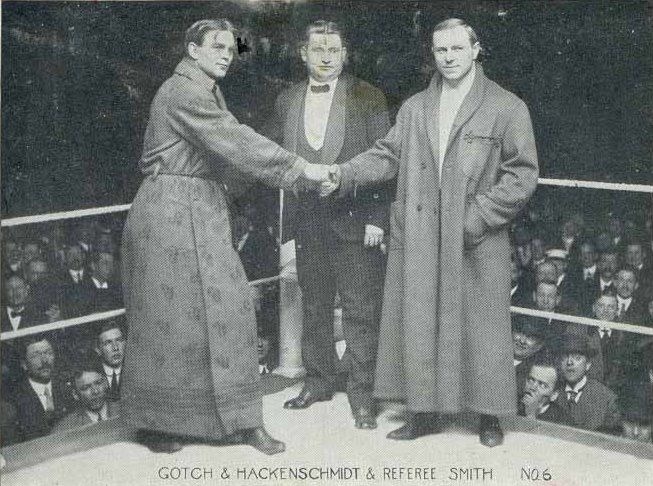George Hackenschmidt: The Russian Lion Who Shaped Strength Training And Wrestling
George Hackenschmidt is a legendary figure in the world of strength training and wrestling. Known as “The Russian Lion,” Hackenschmidt gained a reputation for his incredible strength and athleticism.
He excelled in various sports, but it was wrestling where he truly shined with titles like the French Greco-Roman Heavyweight Championship and the first World Heavyweight Wrestling Champion. He also revolutionized strength training with methods like the hack squat.
The birth of a strength legend

George Hackenschmidt was born on August 1, 1878, in Dorpat (now Tartu), Estonia, to parents who ran a successful dye works. Different from his parents’ average stature, George and his siblings showed exceptional strength from a young age.
At 9, George reportedly weighed 122 pounds despite being only 4 feet 7 inches tall. He had a passion for active sports, particularly weight training, and excelled in gymnastics. George later said, “By the time I reached ten, I was stronger than any of the boys with whom I played.”
At 17, Hackenschmidt left school to apprentice at a large local engineering works. He joined the Reval Athletic and Cycling Club in Dorpat, Estonia. There, he immersed himself in cycling, heavy-weight conditioning, and wrestling, winning numerous prizes.

In 1896, Hackenschmidt’s life took a significant turn when he met Dr. Vladislav Krajewski, a wealthy physician from St. Petersburg and personal doctor to the Czar of Russia. Recognizing George’s potential, Dr. Krajewski invited him to live and train at his home.
For the next two years, Hackenschmidt focused on weightlifting and Greco-Roman wrestling, where his natural strength and explosive power made him a prodigy.
Monumental wrestling triumphs and incredible strength

After establishing himself as a champion weightlifter, George Hackenschmidt began his professional wrestling career in the late 1890s and quickly became a major wrestling celebrity in Europe.
By the early 1900s, he was the premier wrestler in Europe, even selling out prestigious venues like the London Opera House in 1904. His muscular physique drew large crowds, setting a standard for future wrestlers and bodybuilders.

Hackenschmidt was not only known for his genetic gifts but also for his formidable skills in the ring. He had a powerful finishing move, a version of the Bearhug, which made him a tough opponent.
In November 1901, Hackenschmidt won the European version of the World Heavyweight Championship in Vienna by defeating Ahmed Madrali. He added the European Greco-Roman Heavyweight title to his accolades shortly after.

In 1905, he defeated American Heavyweight champion Tom Jenkins in New York City, solidifying his status as the unified, undisputed World Heavyweight Wrestling champion.
In addition to his wrestling success, George Hackenschmidt was famous for his incredible feats of strength.
He performed a one-arm press with 279 pounds, lifted a platform holding 16 people weighing over 3,000 pounds, and set world records in various lifts like the bench press and squat.
These achievements made him a legend in both wrestling and strength training, inspiring many athletes and fitness enthusiasts.
Remarkable Gotch-Hackenschmidt matches

After conquering world champions in both Greco-Roman and freestyle wrestling, George Hackenschmidt faced his toughest opponent: Frank Gotch, an Iowa farm boy.
Wrestling historian Mike Chapman remarked, “In wrestling, there is only one rivalry that stands out: Gotch–Hackenschmidt.”

Most of Hackenschmidt’s matches were won in less than ten minutes. However, on April 3, 1908, at Dexter Park Pavilion in Chicago, his battle with Gotch lasted over two hours.
Gotch, using his speed and rough tactics, wore Hackenschmidt down during their hour-long standoff. Hackenschmidt struggled to counterattack and ended up bloodied.
The referee stopped the bout following an ankle lock submission by Gotch and declared him the winner.

The rematch took place on September 4, 1911, at Comiskey Park in Chicago. Gotch again emerged as the victor. The event drew 28,757 spectators and ticket sales of $87,000, the largest crowd and best gate in wrestling history at the time.
After this second loss, Hackenschmidt retired from professional wrestling, citing a recurring knee injury. He then focused on writing and coaching.
His influence on modern strength training

His book “The Way to Live,” which emphasized a diet of mostly vegetables and some meat, became one of the best-selling books on physical culture, with 21 editions published by 1940.
Beyond fitness, Hackenschmidt engaged in academic debates and wrote several scholarly books, including “The Science of Living” and “Consciousness and Character.”
Throughout his life, Hackenschmidt continued to impress with his physical abilities, even in his later years. He was known for his weekly practice of jumping flat-footed over a rope placed on the backs of two chairs, a feat he could perform 50 times in a row.
He remained dedicated to fitness and reportedly drank 11 pints of milk daily for muscle-building protein.

Hackenschmidt’s innovative strength training methods and philosophies have had a lasting impact on the fitness industry. He emphasized compound movements, progressive overload, and the mind-muscle connection, inspiring modern strength training principles.
In wrestling, he popularized the body lock, or bear hug, and in weightlifting, he invented the hack squat and promoted the bench press for sport-specific strength training.
Hackenschmidt lived until the age of 90, passing away in London in 1968.

